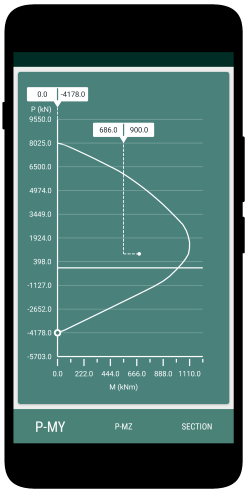Column is basically a vertical structure, which helps to transfer the load from top to bottom in a framed structure. Specifically columns transfer the load from top floors, ceiling or beam to the foundation or to the beams. Engineers must take into account the choice between braced and unbraced columns depending on the specific requirements of the structure and the loads it will be prone to.
Braced Columns
A braced column is a type of structural elements that is designed to resist compressive and lateral loads. Braced columns are made of steel or RCC, and are often used along with other structural elements such as beams and girders. They are usually connected to the structure through a bracing system that helps to distribute the load and maintain stability.
Bracing prevents buckling of the column section. If we want to reduce the unsupported length of the column, in such cases also good to provide bracing in the structure. Bracing provides more strength and stability to the structure.
💡 When the value of the slenderness ratio along both the lateral dimension is less than 15, we should design it as a short column, or else as a long /slender column.
The different types of bracing are as follows:
- Single diagonal: It involves the use of a single diagonal brace that is placed at a 45-degree angle to the column. This type of bracing is typically used in short columns.
- Cross diagonal: It involves placing diagonal braces in a perpendicular or cross-like pattern to connect two or more columns together.
- Eccentric bracing: The bracing is not connected to the center of the column, but is instead connected at an offset location.
- Knee – bracing: Use this type of bracing in short columns where the bracing connects to the column at an angle, forming a knee – like shape.
- X-bracing: Use this type of bracing in tall columns, where two diagonal braces are placed in an X-shape to provide lateral stability.
- V- bracing: This type of bracing is similar to X-bracing, but the two diagonal braces are placed in a V-shape.
The main advantage of the braced column is the side ways translation is negligible, thus the lateral sway is zero. In earthquake prone areas we normally go for these types of columns.
Unbraced Column
An unbraced column is a vertical structural element that does not have any lateral support. It is designed to withstand only axial load and is not capable of resisting any type of bending stress. Unbraced columns are commonly used in structures where the column is subjected to only axial loading.
It has more serviceable area as compared to the braced columns structure. They are typically shorter and thicker than braced columns to support the heavy loads. We go for unbraced columns, where the number of storeys is only 2 to 3 and also in less earthquake prone zones.
💡 When the value of the slenderness ratio along both the lateral dimension is less than 10, we should design it as a short column, or else as a long /slender column.
Conclusions
In conclusion, the main difference between braced and unbraced columns is that braced columns have lateral support and can resist bending stress, while unbraced columns do not have lateral support and are only designed to resist axial loads.
The choice between braced and unbraced columns depends on the specific requirements of the structure and the loads it will be subjected to. Braced columns are typically used in tall structures, while unbraced columns are used in shorter structures where the column is subjected to only axial loading.
The use of bracing in columns is a critical aspect of structural engineering and plays a crucial role in ensuring the safety and stability of structures.
Check this post to read a brief about what is a column and what are the different types of column.
Column design
- RCC Column Design is a free app for designing reinforced concrete columns as per Indian Standards.
- RCC Design and detailing could be performed for uniaxial and biaxial bending conditions specified in IS456:2000
- Option to save the design projects in local storage.
- Detailed calculation steps presented for verification and validation.

This article was crafted by a group of experts at eigenplus to ensure it adheres to our strict quality standards. The individuals who contributed to this article are:
Author


